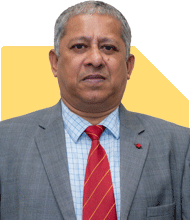Ramalingam Kalirajan |7365 Answers |Ask -Follow
Mutual Funds, Financial Planning Expert - Answered on Apr 18, 2024
He has an MBA in finance from the University of Madras and is a certified financial planner.
He is the director and chief financial planner at Holistic Investment, a Chennai-based firm that offers financial planning and wealth management advice.... more

How much health insurance is required actually for family of 3 at age of 57,51,20 respectively
Medical Inflation: Medical costs tend to rise with inflation. Consider the average annual medical inflation rate (around 10-15%) to estimate future medical expenses.
Healthcare Needs: Assess the healthcare needs based on family history, lifestyle, and any existing health conditions. Older individuals may require more frequent medical care and treatments.
Coverage Amount: A minimum coverage of Rs 5-10 lakhs for the younger member and Rs 10-15 lakhs for the older members is recommended.
Family Floater vs Individual Policies: A family floater policy can provide coverage for all family members under a single sum insured, whereas individual policies offer separate coverage for each member.
Considering the above factors, a health insurance coverage of Rs 15-25 lakhs for the family would be a reasonable starting point. However, it's essential to reassess your coverage needs periodically and adjust the coverage amount accordingly. Consulting with a Certified Financial Planner or insurance advisor can help determine the appropriate coverage amount based on your specific needs and circumstances.
You may like to see similar questions and answers below
Ramalingam Kalirajan |7365 Answers |Ask -Follow
Mutual Funds, Financial Planning Expert - Answered on Jun 06, 2024
Ramalingam Kalirajan |7365 Answers |Ask -Follow
Mutual Funds, Financial Planning Expert - Answered on Jun 04, 2024
Ramalingam Kalirajan |7365 Answers |Ask -Follow
Mutual Funds, Financial Planning Expert - Answered on Jul 24, 2024
Prof Suvasish Mukhopadhyay |263 Answers |Ask -Follow
Career Counsellor - Answered on Dec 28, 2024
Prof Suvasish Mukhopadhyay |263 Answers |Ask -Follow
Career Counsellor - Answered on Dec 28, 2024
Prof Suvasish Mukhopadhyay |263 Answers |Ask -Follow
Career Counsellor - Answered on Dec 28, 2024
Prof Suvasish Mukhopadhyay |263 Answers |Ask -Follow
Career Counsellor - Answered on Dec 28, 2024
Ramalingam Kalirajan |7365 Answers |Ask -Follow
Mutual Funds, Financial Planning Expert - Answered on Dec 28, 2024
Ramalingam Kalirajan |7365 Answers |Ask -Follow
Mutual Funds, Financial Planning Expert - Answered on Dec 28, 2024
Dr Dipankar Dutta |730 Answers |Ask -Follow
Tech Careers and Skill Development Expert - Answered on Dec 27, 2024
Dr Dipankar Dutta |730 Answers |Ask -Follow
Tech Careers and Skill Development Expert - Answered on Dec 27, 2024
Dr Nagarajan Jsk |188 Answers |Ask -Follow
NEET, Medical, Pharmacy Careers - Answered on Dec 27, 2024
Dr Nagarajan Jsk |188 Answers |Ask -Follow
NEET, Medical, Pharmacy Careers - Answered on Dec 27, 2024





















